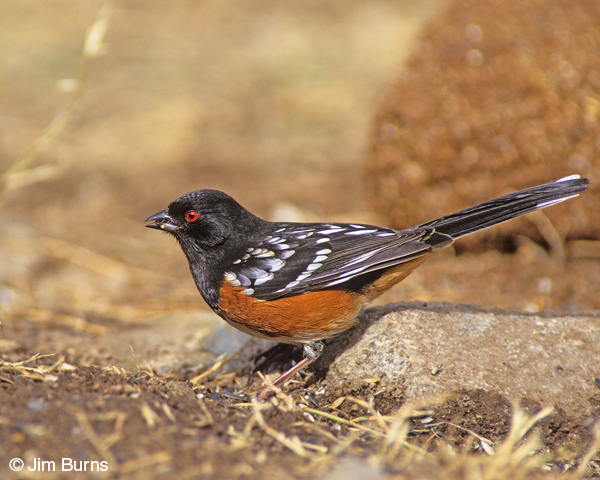My retreats into the desert have proven a blessed relief from both aural noise and the unsocial spewings of our society’s disaffected and dissatisfied. It could be this escape from people with an opinion or an axe to grind accounts for the surge in birdwatching in and since the pandemic, and I say bring it on. Even as bird numbers seem to be declining, I’m seeing an increase in the numbers of folks out in nature looking for them, many of them carrying cameras, most of them apparently having a blast.
On a chilly morning between the two recent holidays, a thin sun peeking in and out from behind an overcast, I find myself out on the Tonto, no human beings with cell phones anywhere. The first thing to register on my aural awareness is scritching in the leaf litter just off a game trace I’m following. I recognize the sound. Unlike a lizard slithering off through winter-dry leave litter, this sound is rhythmic and repetitive. It is the “double scratch” foraging strategy evolved by towhees and some of the sparrows—hop forward, kick backwards twice, repeat, exposing seeds or insects beneath the ground cover. I sit five minutes before seeing the Spotted Towhee “noisily” at work under a creosote bush.
Ten minutes farther into the desert I enter a thick mesquite bosque and immediately flush two birds that I do not see, only hear. It is a sudden burst of thumping through the foliage, much like that of doves, only softer and briefer. I recognize the sound. It is Northern Cardinals taking flight. The flight of Phainopeplas, the expected species in this habitat, is typically soundless, and I can only assume the “black cardinals” are an inch smaller and their flight more buoyant to facilitate their insectivore lifestyle and hence the noticeable difference from red cardinals in their flight “noise.”
A hundred yards along the trail, no birds in sight, I detect a “whisper song,” low, slurred, melodious phrases so barely audible they seem to blend and attach themselves to the light breeze from the eastern sky. I recognize the sound. Two birds duetting, Curve-billed Thrasher pillow talk. One of our earliest nesting desert species, it is a rare treat to hear this loud and typically noisy species warming up for breeding season with these soft and private vocalizations.
And then I am startled alert, involuntarily flinching, as a tiny explosion of noise bursts the desert’s solitude, seemingly right above my head. I have to smile to myself as I recognize the sound. The proximity and the unexpectedness resonance get me every time. A territorial male Anna’s Hummingbird is displaying somewhere nearby, the short, hollow squeak produced by his outer tail feathers at the bottom of his dive as he accosts another hummer on his territory producing a sound out of all proportion to the bird’s diminutive size. It proves to be the loudest noise I hear on my morning ramble.
As I leave the “real world” and drive back into Phoenix, I can’t help reflecting on the thought that the noises of humanity that so many of us now abhor may finally drive many more of us to seek refuge in the real noises of the natural world. One can only hope it’s not too late.

Spotted-Towhee with seed